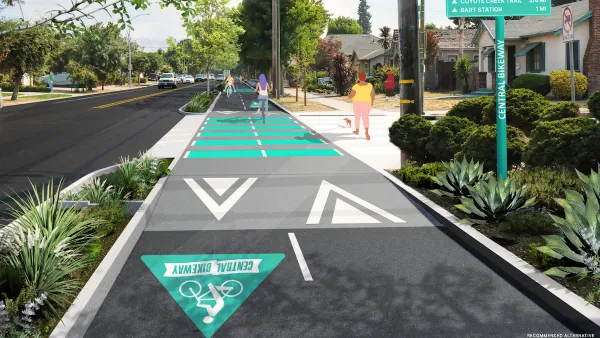A fascinating Wired Magazine article reviews the concept of building "atomic walls" around the nation's most important urban areas.
"Walls have protected cities as long as there have been cities to protect. To guard against invasion, Nebuchadnezzar built a network of brick walls so that 'the evil and the wicked might not oppress Babylon.' As weapons evolved, walls had to change with them. By the 16th century, artillery had advanced to the point that Vienna razed the scattered developments outside city walls so potential invaders would have nothing to hide behind. The battlements had become a broad detection zone. The width of the space created was 400 meters - the range of cannons at the time. The outline of that zone is still visible today in the avenues and parks that make up Vienna's fabled Ringstrasse.Airplanes and missiles rendered the city wall symbolic; these days, the important defensive barriers aren't physical fortifications. But the advent of small nuclear weapons and dirty bombs deliverable not by missiles and planes but by trucks and vans suggest a new kind of urban perimeter defense, an atomic wall. Set up not as an actual barrier but as a vast array of sensors, such a technology would exploit the fact that any radiological or nuclear weapon leaves a footprint."
Thanks to Chris Steins
FULL STORY: Stopping Loose Nukes

Planetizen Federal Action Tracker
A weekly monitor of how Trump’s orders and actions are impacting planners and planning in America.

Silicon Valley ‘Bike Superhighway’ Awarded $14M State Grant
A Caltrans grant brings the 10-mile Central Bikeway project connecting Santa Clara and East San Jose closer to fruition.

Amtrak Cutting Jobs, Funding to High-Speed Rail
The agency plans to cut 10 percent of its workforce and has confirmed it will not fund new high-speed rail projects.

Oregon Approves Ambitious Framework for ’Microgrids’
Local energy “islands” within the larger power system ensure key facilities can remain online during emergencies and power outages.

A Historic Investment in LA County’s Parks and Open Spaces
Los Angeles County has launched its largest-ever competitive grant program, investing $58 million to expand park access, enhance climate resilience, and support community-driven projects in the areas that need them most.

San Diego Wins $14M for Affordable Housing
The funding comes via the state’s Regional Early Action Planning program and will help create close to 1,000 new housing units.
Urban Design for Planners 1: Software Tools
This six-course series explores essential urban design concepts using open source software and equips planners with the tools they need to participate fully in the urban design process.
Planning for Universal Design
Learn the tools for implementing Universal Design in planning regulations.
Caltrans
City of Fort Worth
New Jersey Institute of Technology
Mpact (founded as Rail~Volution)
City of Camden Redevelopment Agency
City of Portland
City of Laramie


























